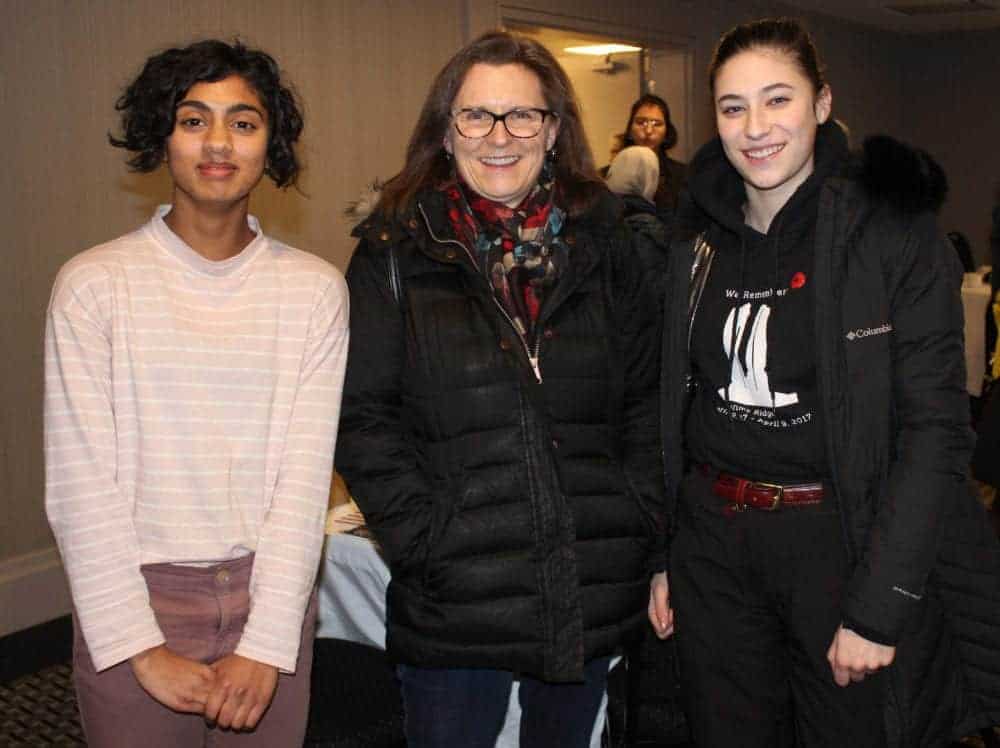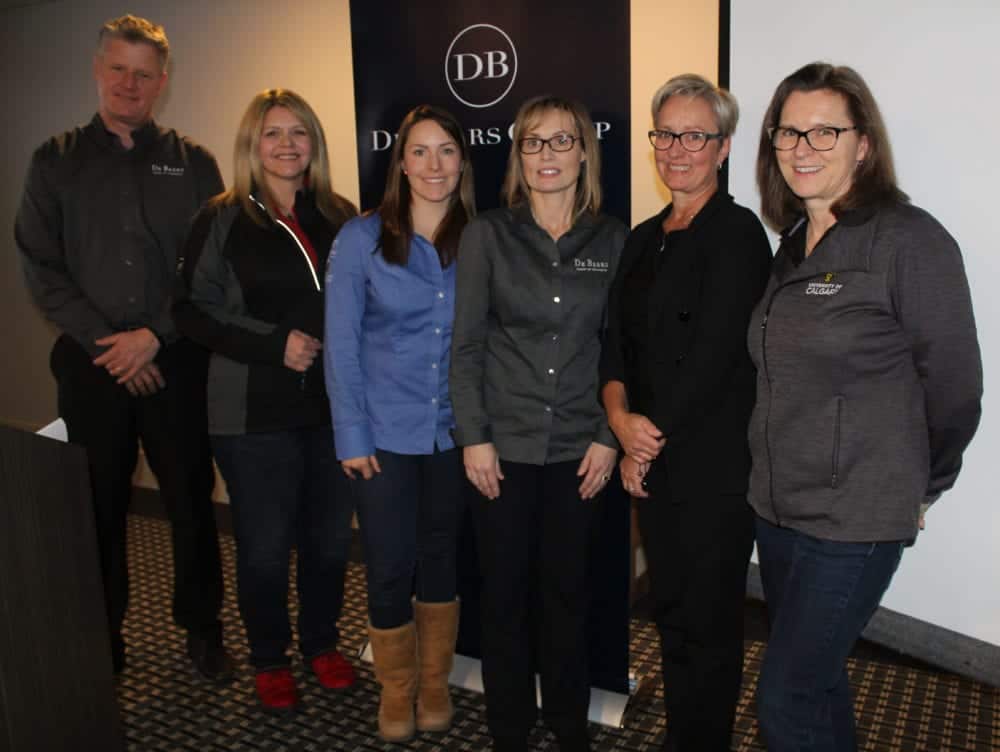For most Grade 11 students, beginning to choose a career path can be daunting, but for young women considering the mining industry it may be even harder.
Forty-five female students from area schools attended the second annual women-In-Mining/STEM luncheon at Chateau Nova Hotel, Nov. 19.

Adithi Balaji, Grade 11, left, St. Patrick High School, Lesley Rigg, dean of the faculty of science at the University of Calgary, and Makenna Genge, Grade 11, St. Patrick High School attended the De Beers Group 2018 Women-In-Mining/STEM Luncheon Chateau Nova Hotel, Nov. 19, 2018
Organizers say that closing the gender gap in a field which is heavily male dominated is important in the coming years. This means working with schools to expose young girls to the benefits and opportunities that are possible within mining-related work.
The diamond mining company, which owns the Gahcho Kue mine, as well as the now defunct Snap Lake Mine and Victor Mine in Northern Ontario, hosted a panel of female specialists aiming to inform young women the benefits of the profession. Among the speakers included was
Makenna Genge, a Grade 11 student from St. Patrick High School who said she was interested in the luncheon because she enjoys math and science. As such, she is interested in seeing what she can actually do with her studies.
“Right now it is kind about seeing what is out there,” she said, adding she is cautious about limiting herself. “Right now all I think about is school and grades and stuff. To look further into the future, it is kind of foreign to me. I am trying to keep my options open and I am just trying to figure out what do I want to do for the rest of my life? It is a really big decision that we have to make at a fairly young age.”
Schoolmate Adithi Balaji, who is also in Grade 11, said she was interested in the luncheon because she is trying to find a way to come back to Yellowknife, build a career and give back to the community.
“For me, I really love this town and I want to come back at some point,” she said. “I think mining would be a good way to get back to Yellowknife. I know a lot of people are excited to leave, but I want to find ways I can make a career here.”

Allan Rodel, Mine General Manager, Gahcho Kue Mine, Pamela Ellemers, head of technical services, De Beers, Kimberly Balsillie, community liaison with De Beers, Kelly Brenton, superintendent of Indigenous Affairs and Sustainability with De Beers, Pamela Strand assistant deputy minister of Mineral Resources, GNWT Department of ITI, Lesley Rigg, dean of the faculty of science at the University of Calgary.
The event included a speaking panel of Pamela Ellemers, a manager of technical services at De Beers, Kimi Balsillie, a Metis Yellowknifer and community liaison with the company; Pamela Strand, assistant deputy minister of Minerals, Petroleum and Resources at the GNWT department of Industry, Tourism and Investment; and Lesley Rigg, dean of the Faculty of Science at the University of Calgary.
Ellemers discussed her career development and the importance of taking a risk early in her career as a young geologist in remote, northern Saskatchewan.
“It was an amazing experience and when I had that experience, all of a sudden it dawned on me that this was what I wanted to do for the rest of my life,” she said.
“Now I’m working to try to figure out if our next diamond deposits are going to be our next mine.”
She touched on her experience travelling within the company, including to South Africa and in Canada to different mines.
Balsillie, a Sir John Franklin High School graduate, talked about her experience as an environmental officer and how changes in the landscape drove her to become a community liaison at Gahcho Kue. She said it was important to get the required education and develop contacts and volunteering hours to become a mine worker.
“My passion was to ensure that the land and people who use the land were taken care of and how to do it was to get a job at a mine and be more involved,” she said.
Strand explained how she ended up working in government, starting as a field geologist and how her path originated from a lifelong passion for the outdoors and science. During her career she was involved in creating geology and mining-related companies in the private sector before being offered a job in 2014 to work with the GNWT. Since then, she has taken part in the devolution process and the territory’s effort to take more local control of its natural resources.
“I thought, what an opportunity, because when you think about it, how often does a jurisdiction take control of minerals and oil and gas,” she said, adding that today she is involved in developing a Mineral Resources Act and working to find new mining sources in the North.
Working with people and aiming to benefit the local community are big incentives, she said.
Rigg discussed the unpredictability of the mining field and how she became a scientist instead of travel-loving flight attendant or a pilot.
“You don’t necessarily have to know where you want to go or what you want to be,” she said. “A path will emerge and it does.”